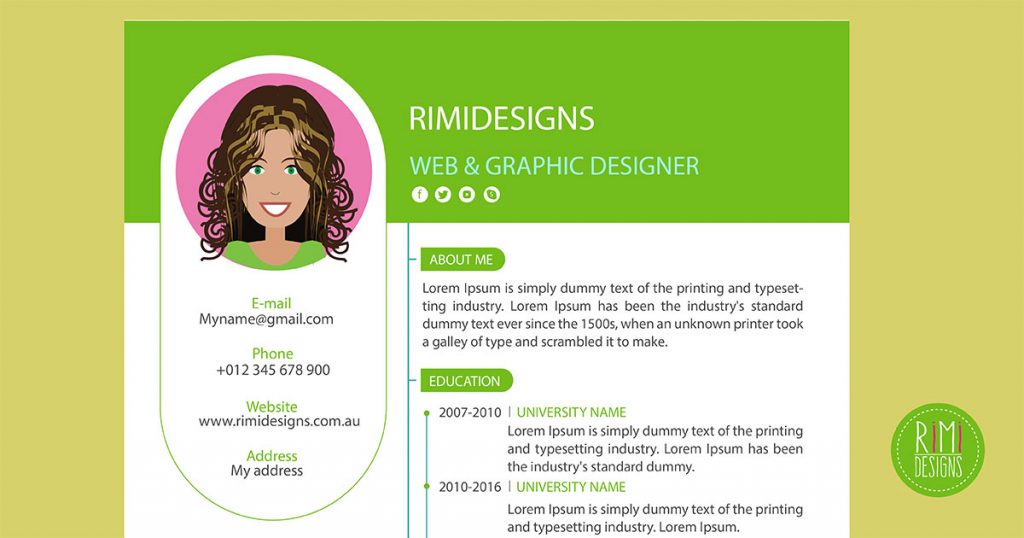
How to Write an Awesome Resume
Your resume is still the way to land yourself your next job. A resume is never going to fully represent who you are, as you probably can’t even fit all your work experience on one sheet of paper. But here’s what you should include on your resume to make it awesome.
1. The right resume style
There are many resume options, but no matter how creative you are, most clients will prefer “traditional” formats with creative content rather than a creative, non-traditional format. So keep it simple.
Option 1: Organise your resume chronologically
You should include a short list of your best recent work experience.Option 2: Organise your resume by skill/function and then chronologically
This means you’ll first give a list of 4-10 of your skills and projects/titles by that skill. This is good for people with gaps in employment. However, you should follow this with a standard chronology – not having any dates looks like you’re hiding something.
2. Your best (recent) work experience
No matter what the style resume, you need to be careful to highlight your best experience – not necessarily all of it.
Do:
- Constantly record your projects and write a one-sentence description of each.
- Include at least 3-5 jobs, listing the most “impressive” ones first. What do we mean by impressive? We mean namedropping. Employers would rather see the high calibre of companies you’ve worked for, even if the project was less intensive. It’s a cheap trick, but it works.
- Remember, you come up with your own job title. Pick something that is representative and recognisable. There are a lot of “cool” job titles that no one understands.
- Brag.
- Use verbs to begin each description to show that you’re a doer.
- Include testimonials, if appropriate. Just one little box with a quote from someone who loved you in the top right corner can breathe life into a resume.
Don’t:
- Don’t overload people with details. There’s nothing more annoying than a 3-page resume.
- If you were employed in a traditional role less than 3-5 years ago, include both a description and a few project details.
- For older jobs, just include job title and 10-word description.
- For jobs from more than 10 years ago, just include job title.
- Don’t repeat the same action verb too many times. “Create” can become “develop”, “generate”, “produce” or “innovate”.
- Don’t exaggerate your contribution. Remember, anyone can look up what you did or email that person they know who happened to work where you worked.
3. Your online presence
For many jobs, this can be the most important part of your resume.
Include:
- Your website. This should have your portfolio or samples of your work. This may be the single most important item in your resume.
- Your LinkedIn account.
Maybe include:
- Your X/Facebook/Instagram accounts. Only include social media if it will enhance your prospective employer’s opinion of you, not because you hear that you should.
4. Work samples
There are several ways to include work samples in your resume:
- “See my full portfolio on www.rimidesigns.com.au”.
- Attach work samples along with your resume to the email.
- Since many employers will look at your website from their computers, include a selection of links directly to your previous clients/work/products.
5. Your side businesses/specialities
If you do have any side interests, don’t be shy about including them. In your resume, as in all things, present your “whole” self, not just your business self.
6. Education/training/classes
For most jobs, you’ll need to include your education. But put it at the bottom of the page. The farther you are from graduation, the less relevant it is.
7. References
Along with a few testimonials, include the name and email address of two or three referees.
What to do if you aren’t qualified for a job you really want
Things to keep in mind:
- A company rarely expects you to qualify for 100% of their requirements.
- Personality, creativity and culture fit is sometimes as important as skills. Research the company you’re applying for. Read their mission statement. Read their blog posts. Read their social media feeds. You should get a good sense of company culture. Then convey that in your resume or cover letter, either through tone or by picking samples that you think align with their mission. Congratulate them on the company’s recent successes or send them an interesting/relevant link they might want to look at.
- You can always send your resume anyway and explain in your cover letter that you think you’re a great fit for the organisation and are interested in something in that department, but not necessarily that job.
- The only thing that is usually more strict is years of experience. Like it or not, 2 years of experience does not equal 8 years.
SOURCE: Freelancers Union



